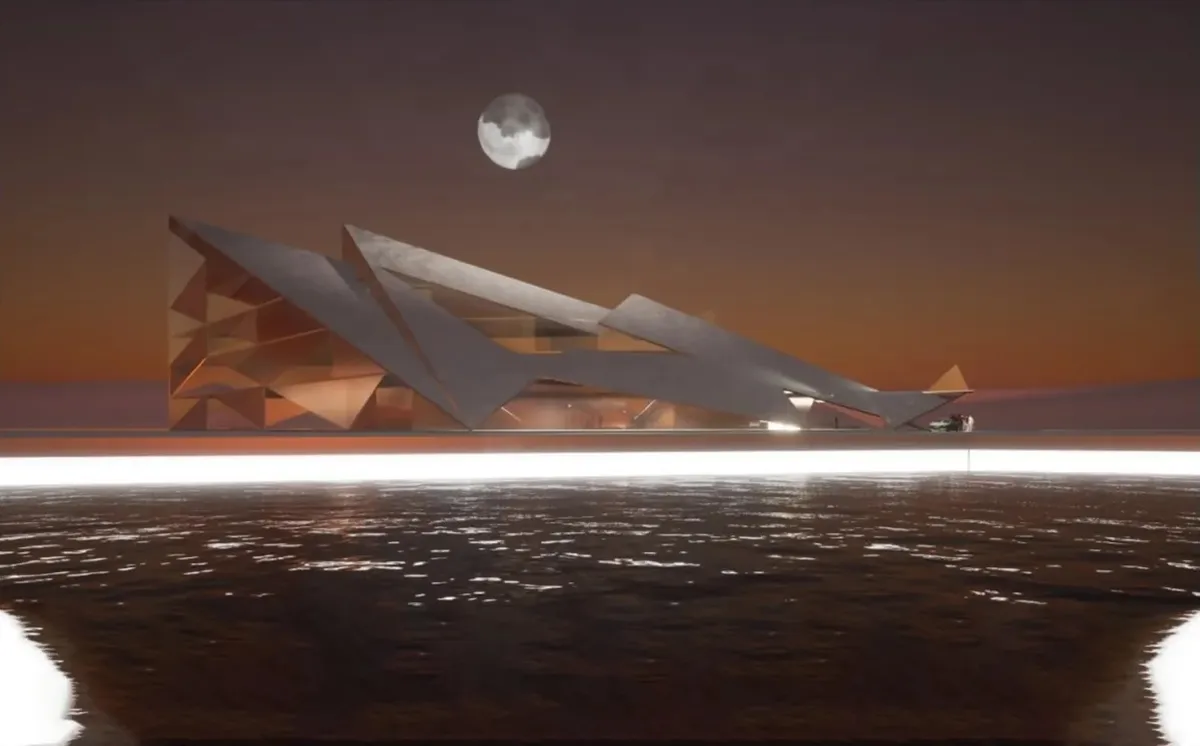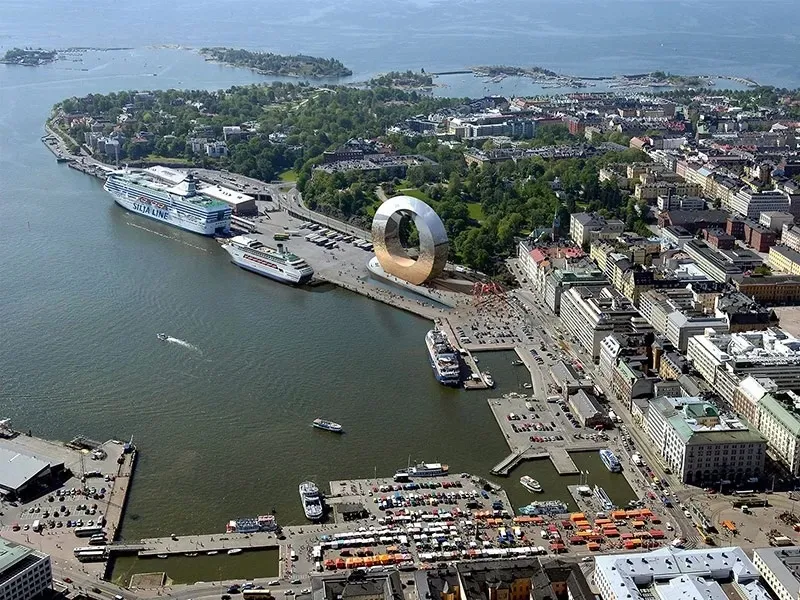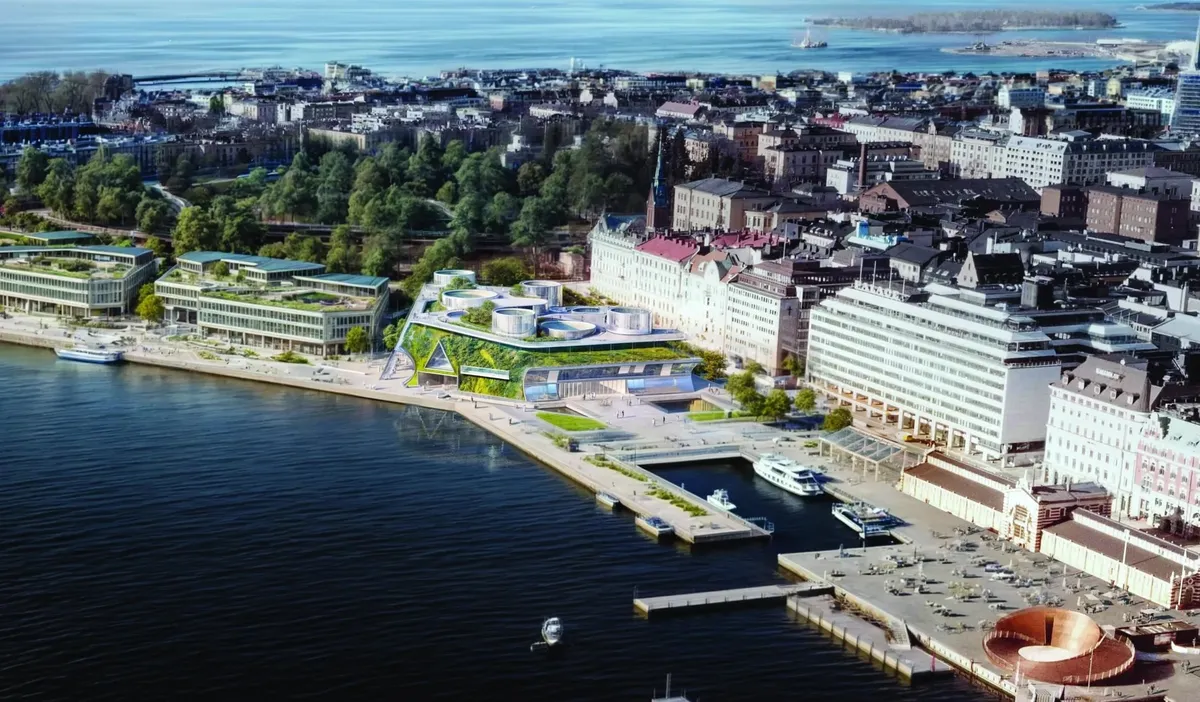Plus: KPF talks about its plans to carve up a London office skyscraper.

Design entry 20 of 623.
Source: The New Museum of Architecture and Design
ello and welcome to Bloomberg’s weekly design digest. I’m Kriston Capps, staff writer for Bloomberg CityLab, and your guide to the world of architecture and the people who build things.
This week Shigeru Ban won the 2024 Praemium Imperiale, Japan’s highest architecture award . Sign up to keep up: Subscribe to get this newsletter every Sunday .
Ten years ago, when museums were expanding faster than hot chicken franchises, the Solomon R. Guggenheim Museum pitched the Finnish capital on a new attraction in the city’s South Harbor. To gin up excitement for a Helsinki museum, the Gugg held an open contest to design the building. The competition yielded 1,715 submissions, and the museum dutifully posted all of them online.
Most of them were bizarre. Many were outright unbuildable. But after sorting through hundreds of blobs, wedges and saucers, Guggenheim Helsinki planners found their winner, a compelling submission by the French firm Moreau Kusonoki. All that work ended up being for naught: Helsinki lawmakers balked at the $138 million price tag, voting to torpedo the project in 2016.

One of the 1,715 design submissions for the Guggenheim Helsinki.Source: Solomon R. Guggenheim Museum
The failed Guggenheim bid left city officials with the question of what to do with South Harbor, where the building was supposed to anchor the redevelopment of the Makasiiniranta district. In April of this year, a new set of stakeholders, including the state-owned real estate company ADM and the Foundation for the Finnish Museum of Architecture and Design, announced a new plan: a different museum on almost the same spot.
Plus another open competition; Helsinki loves a good design contest.

One of the hundreds of exuberant proposals for the New Museum of Architecture and Design.Source: New Museum of Architecture and Design
This week, planners behind Helsinki’s forthcoming New Museum of Architecture and Design released the drafts from that contest. At just 623 entries, it’s a relatively modest haul for Helsinki. This time around, the design brief was more sophisticated, with detailed requirements for applicants. (At least one team member, for example, must have a degree in architecture.) Even so, designers delivered plenty of weirdness, with entries that include fantastical cylinders, pentagons, pyramids and more.
Entry #219 is shaped like a spiral galaxy with a shaft of light beaming from the building’s center to the sky. Option #336 looks like a jagged iceberg. Contestants span the whole range of architectural ideas, from trad neoclassical to ’90s deconstructivism. Sort through them long enough and you’ll find the obvious submissions from the likes of BIG or Snøhetta — or blatant rip-offs of well-known firms.
Architecture writer Will Jennings, bless his heart, is going through all 623 designs one by one, posting his notes on Twitter/X. “If you like Oslo’s Opera House, I have the Lidl version for you,” he writes of one submission. Sick burn.

Entry 170 of 623 looks like a luminous waterfront cube.Source: New Museum of Architecture and Design
For a giant gray wedge, you could do worse than entry 5.Source: New Museum of Architecture and Design
There’s one big difference from the 2014 competition: One of these designs may get built. With $120 million in public funding already secured, Helsinki aims to bring together two existing museums under one roof, the Museum of Finnish Architecture and Design Museum Helsinki. The new museum’s combined collection will feature some 900,000 objects, including work by such Finnish luminaries as Alvar Aalto, Eero Saarinen and Marimekko. Given the stature of the project, the museum might have simply commissioned a design by a leading Finnish architect or asked select firms to apply. Instead, planners put a premium on making the selection process as open as possible. (The New Museum of Architecture and Design did not respond to a request for comment.)
For designers, these contests are a colossal waste of resources, since architects and artists don’t get paid for their free work. Entrants have an incentive to put as little time and effort into these proposals as possible (and it shows). All the better for the rest of us, though, that the museum planners are casting as wide a net as possible, since otherwise we might never get a look at “Intersphere” or “Futuresoup.”
















![Anne Hathaway’s Celebrity Shoe Style [PHOTOS]](https://singexpress.news/wp-content/uploads/2024/10/7316aba8adf0fa7f551350cdb6d52baa-360x180.jpg)























